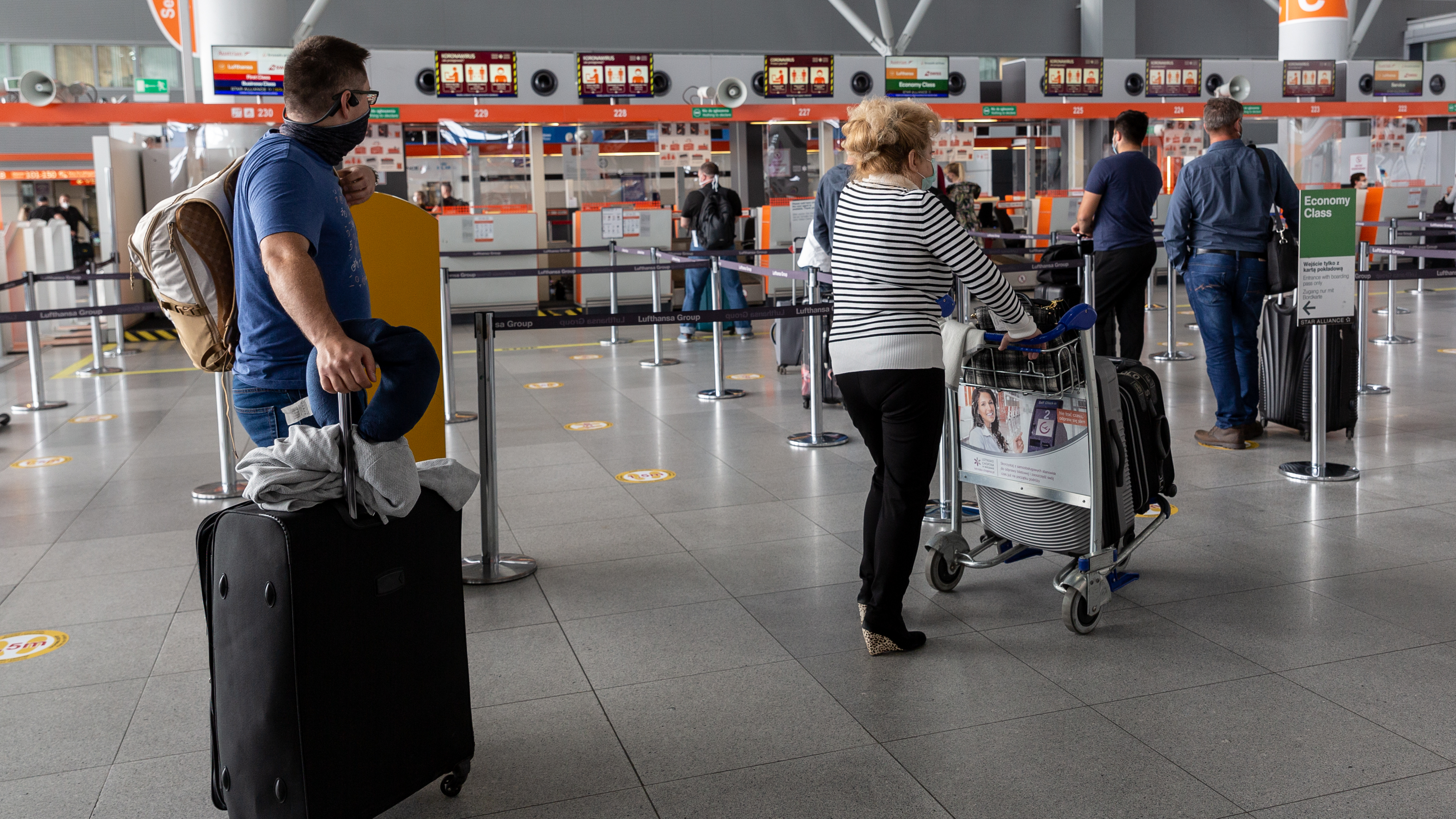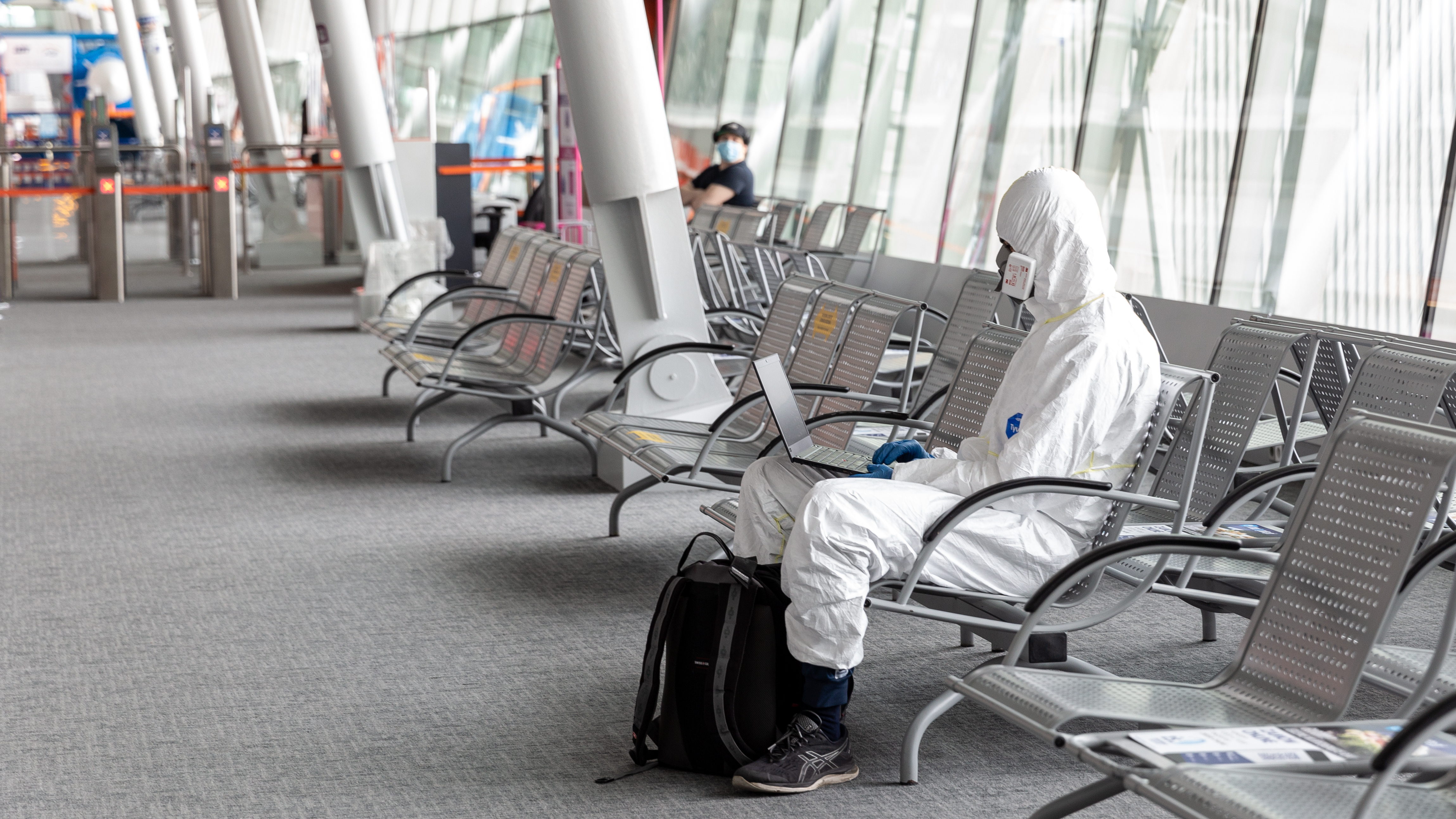
Coronavirus restrictions have made it confusing to travel around Europe. /Dominika Zarzycka/NurPhoto/Getty Images
Coronavirus restrictions have made it confusing to travel around Europe. /Dominika Zarzycka/NurPhoto/Getty Images
The European Commission has proposed a traffic light system of red, yellow and green to streamline EU countries' coronavirus threat level.
It is an attempt to overcome the current confusion existing for travelers seeking to go from one EU country to another and having to work out what restrictions are in place.
Under the proposal, the European Centre for Disease Prevention and Control would produce a weekly map with every region or country given the colors of a traffic light.
The commission is advising that no restrictions be set for travelers from green or orange zones, though visitors from the latter might be recommended to take a COVID-19 test.
In case you missed it:
• EU lawmakers call for sanctions and inquiry into alleged poisoning of Russian opposition leader Navalny
• Wearable tech keeping workers safe from COVID-19
Restrictions, whether a quarantine or a test, would be appropriate for those coming from red zones, although the measures should be the same for all red zones, whether inside or outside the country.

A passenger at Chopin Airport in Warsaw, Poland, wears full personal protective equipment. /Dominika Zarzycka/NurPhoto/Getty Images
A passenger at Chopin Airport in Warsaw, Poland, wears full personal protective equipment. /Dominika Zarzycka/NurPhoto/Getty Images
Countries would be free to determine what measures to take.
The color coding is based on two criteria – no restrictions for people from areas with 50 or fewer COVID-19 infections per 100,000 people in 14 days, or where the percentage of positive tests is below three percent, unless the number of cases exceeds 150.
Red zones denote regions or countries with more than 150 cases per 100,000 or more than 50 cases if at least three percent of COVID-19 tests are positive.
One EU diplomat told Reuters that some ambassadors, who discussed the issue on Wednesday, pointed out that various EU countries did not have health services or test-and-trace systems equally capable of coping with COVID-19. More vulnerable countries as a result might wish to set tighter limits for visitors.
EU countries, most of which closed their national borders when the coronavirus pandemic struck, began easing restrictions in June. But the coordinated opening swiftly unraveled.
In case you missed it:
• Quarantine 'confusion' in UK creating chaos for travelers
• How aviation's impact on global warming has doubled
Hungary locked its borders while exempting visitors from three neighboring states, a move branded by the Commission as discriminatory and illegal.
On Friday, German Health Minister Jens Spahn said some countries want to shorten the 14-day quarantine period from risky regions to 10 days.
"We want to prevent a situation where travel rules in Europe and to Europe are starkly different. This leads to uncertainty and creates problems at borders," said Spahn.
"We agreed that when traveling from a risky region, a general quarantine of at least 10 days is advisable. Some member states want to keep the possibility to go beyond 10 days."
Many EU countries are facing rising numbers of infections and have widely varying quarantine rules for travelers from different regions with high case rates.
Check out our six-part podcast series Notes on a Pandemic as CGTN Europe finds out how business, science and people have risen to the challenge of COVID-19.
Source(s): Reuters